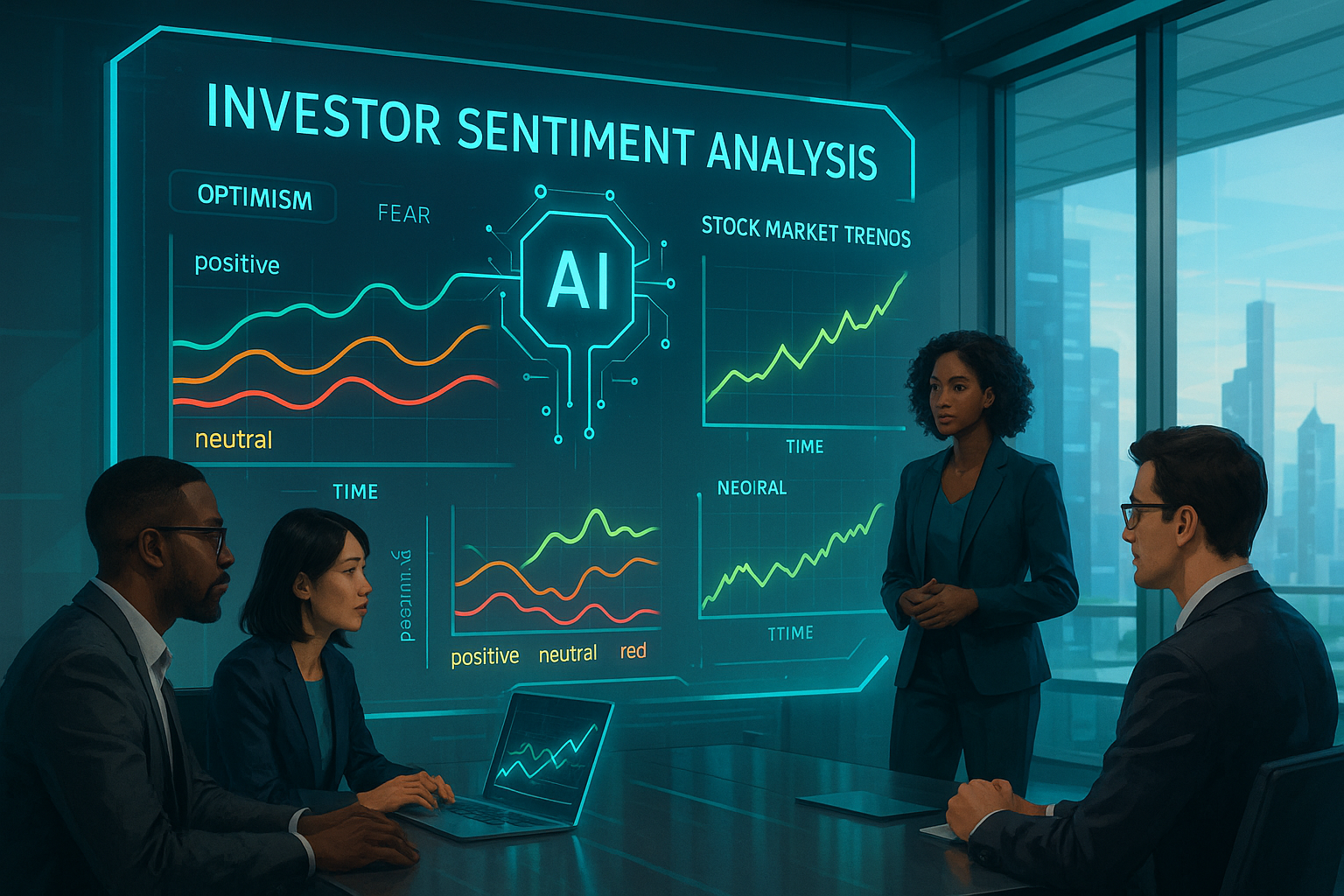AI is transforming financial modeling by making it faster, more precise, and dynamic. For startups and growing businesses, financial planning is critical to survival and success, especially when managing risks like market shifts, supply chain issues, or funding delays. Traditional methods, like spreadsheets, often fall short due to static assumptions and slow updates. AI-powered tools, however, analyze vast datasets in real time, simulate complex risk scenarios, and provide actionable insights.
Key Takeaways:
- AI Benefits: Processes large datasets, updates in real time, and identifies patterns that manual methods miss.
- Manual Modeling: Offers control and transparency but is slow, error-prone, and struggles with complex data.
- Decision Factors: Speed, accuracy, cost, and control are key when choosing between AI and manual approaches.
- Hybrid Approach: Combining AI’s efficiency with human expertise balances precision and transparency.
AI tools like Lucid Financials are already helping companies deliver real-time forecasts and investor-ready reports, saving time and reducing errors. For businesses navigating today’s fast-changing markets, integrating AI into financial planning can be a game-changer.
AI vs. Human Insights in Financial Modeling to Build Accurate Models for Decision-Making
1. AI-Powered Financial Modeling
AI is reshaping financial modeling by processing vast, diverse datasets to create risk scenarios that evolve and improve over time through machine learning.
Data Processing Capabilities
For startups looking for precise risk assessments, AI stands out by analyzing massive amounts of data from multiple sources at once. It pulls information from market trends, historical financial data, industry benchmarks, and economic indicators, forming a solid base for risk modeling.
What’s impressive is how AI handles both structured data, like accounting records, and unstructured data, such as news articles or social media sentiment. It even incorporates external variables like commodity prices or shifts in interest rates. This multi-faceted approach gives businesses a well-rounded picture of potential risks that could affect their financial health.
AI is also exceptional at spotting patterns. For instance, it might uncover a connection between supply chain costs and geopolitical events or link customer churn rates to seasonal hiring trends in specific industries. These insights often go unnoticed with traditional methods.
Scenario Flexibility
Modern AI tools don’t just create static scenarios like "best case" or "worst case." Instead, they generate hundreds or even thousands of potential outcomes based on probabilities and real-time data inputs.
These platforms model how interconnected variables affect one another. For example, if customer acquisition costs rise, the AI recalculates the ripple effects on cash flow, hiring plans, marketing budgets, and runway projections. This ability to simulate cascading impacts offers a more realistic view of financial performance under changing conditions.
AI also excels at stress testing. It allows companies to simulate multiple adverse events happening simultaneously - like a market slump combined with increased competition and supply chain issues. This level of testing helps businesses identify vulnerabilities they might otherwise overlook.
Speed and Automation
AI significantly reduces the time needed to build and update financial models. What used to take days can now be done in minutes. Tasks like data collection, cleaning, and integration are automated, cutting down on manual errors and freeing up finance teams for higher-value work.
Another big perk is real-time updates. As new data flows in - whether from internal systems or external sources - AI models instantly incorporate it, keeping forecasts up-to-date and actionable. Unlike traditional models, which can become outdated quickly, AI ensures analyses remain relevant.
The automation doesn’t stop there. AI can generate professional-grade reports, board presentations, and detailed financial analyses on demand. These come complete with charts, graphs, and written summaries, making it easier to communicate complex insights to stakeholders.
Accuracy and Predictive Power
When it comes to accuracy, AI often outperforms traditional methods, especially in complex scenarios with many variables. It’s also great at picking up on early warning signs that human analysts might miss. By monitoring hundreds of variables at once, AI can detect subtle shifts that could signal trouble before it escalates.
AI goes a step further by offering confidence intervals and probability estimates for different scenarios. This helps decision-makers not just understand what might happen, but also how likely each outcome is. Such insights allow for more informed risk management and strategic planning.
For startups and fast-growing companies using platforms like Lucid Financials, AI-powered tools integrate smoothly with existing financial systems. They deliver real-time forecasts, cash flow analyses, and scenario planning while meeting the accuracy and compliance standards required for investor updates and strategic decisions.
Next, we’ll explore how this AI-driven approach compares to traditional manual modeling, highlighting the trade-offs between the two.
2. Manual Financial Modeling
Manual financial modeling relies on human expertise and tools like spreadsheets to build risk scenarios. While this approach allows for a high level of control and customization, it’s often slow and time-consuming. Handling larger datasets can amplify these challenges, as tasks like data collection, validation, and recalculation become more cumbersome. This can lead to delays in updates and make it harder to quickly reassess risks when conditions change.
sbb-itb-17e8ec9
Advantages and Disadvantages
When it comes to financial modeling, both AI-driven and manual approaches bring their own set of strengths and challenges. Deciding which approach suits your needs depends on understanding these trade-offs and aligning them with your company’s goals and resources. Let’s break down the pros and cons of each method.
AI-driven financial modeling stands out for its ability to handle massive datasets, including both structured data (like financial statements) and unstructured data (such as news articles or social media posts). This capability helps identify emerging risks that traditional methods might overlook. According to McKinsey, AI can lower risk assessment costs for financial institutions by up to 30%. Notably, 70% of financial institutions already use AI in some capacity for risk assessments, and 90% plan to increase their AI investments within the next two years.
However, AI isn’t without its challenges. A major concern is the lack of transparency, which can complicate regulatory compliance and erode stakeholder trust. Additionally, if the AI model is trained on flawed or biased data, the results can be skewed. The high initial costs for technology and the skilled personnel needed to manage AI systems can also be a barrier, particularly for smaller organizations.
On the other hand, manual financial modeling offers full transparency and control. Financial professionals can clearly track and explain every calculation, which is invaluable for gaining stakeholder confidence and meeting regulatory requirements. This approach also allows experts to apply their industry knowledge and account for unique contextual factors that AI might overlook.
But manual methods come with their own set of drawbacks. They are time-intensive, less scalable, and more prone to human error. With the sheer volume and speed of modern financial data, manual models often struggle to deliver timely insights or adapt quickly to changing market conditions.
Interestingly, banks using generative AI systems have reported cutting the time needed for climate risk assessments by 90% while maintaining 90% accuracy.
Here’s a side-by-side comparison to highlight key differences:
| Criteria | AI-Driven Financial Modeling | Manual Financial Modeling |
|---|---|---|
| Data Processing Capabilities | Handles large volumes of structured and unstructured data; detects complex, non-linear patterns | Relies on historical data; struggles with large datasets |
| Scenario Flexibility | Creates thousands of dynamic scenarios in real time; adjusts automatically to new data | Limited to a few predefined scenarios; requires manual updates |
| Speed and Automation | Processes data quickly; automates repetitive tasks like data entry; enables real-time analysis | Slower and labor-intensive; manual updates delay insights |
| Accuracy and Predictive Power | Offers higher forecasting accuracy; reduces human bias; captures complex relationships | More prone to human error and bias; relies on static assumptions |
For startups and fast-growing companies, platforms like Lucid Financials show how AI-powered tools can deliver real-time insights and investor-ready reports. These systems combine the speed and precision of AI with the expertise of financial professionals.
A hybrid approach - blending AI’s computational efficiency with human judgment - can be a smart middle ground. This model allows businesses to take advantage of automation while maintaining transparency and ensuring their assessments remain clear and understandable for stakeholders and regulators.
Final Recommendations
In today’s unpredictable market, startups and fast-growing companies are finding that AI-driven financial modeling is a game-changer for managing dynamic risks. While traditional manual methods provide a sense of control and transparency, they often fall short when it comes to the speed and adaptability modern businesses demand.
AI-powered tools shine in their ability to process vast amounts of data in real-time, offering dynamic risk scenarios that are especially critical during fundraising. During these periods, reports need to be not only accurate but also up-to-date and comprehensive to meet investor expectations. By blending AI’s computational power with human expertise, businesses can maintain transparency while ensuring efficiency and precision.
Take platforms like Lucid Financials, for example. Their system promises clean financial records in just seven days, real-time forecasting, and investor-ready reports. What makes them stand out is the combination of cutting-edge AI technology with the support of skilled financial professionals who ensure everything is accurate and compliant.
The way forward is clear: integrating AI-driven financial tools alongside expert oversight is a smart move. As market conditions grow more volatile and data becomes increasingly complex, companies that adopt these tools early will be better equipped to adapt quickly, make informed decisions, and stay ahead in a challenging risk landscape.
FAQs
How does AI enhance the speed and accuracy of financial modeling compared to traditional methods?
AI is transforming financial modeling by analyzing massive datasets at incredible speeds and spotting patterns that manual methods might overlook. This means businesses can achieve more precise risk assessments and forecasts - key elements for effective and flexible financial planning.
On top of that, AI takes over tedious tasks such as gathering data, validating it, and running scenario analyses. With these processes automated, financial models can be updated and tested in real-time, saving time and boosting efficiency. By blending accuracy with quicker decision-making, AI is reshaping how companies handle risk and craft their financial strategies.
What challenges come with using AI in financial modeling, and how can they be addressed?
Using AI in financial modeling brings a host of benefits, but it’s not without its hurdles. Key concerns include algorithmic bias, lack of transparency, cybersecurity threats, and systemic errors. If left unchecked, these issues could lead to flawed risk evaluations or inaccuracies in financial data.
To tackle these problems, businesses can take proactive steps. Regularly monitoring AI models helps catch errors early, while assembling diverse development teams can reduce bias in algorithms. Ensuring transparency in how AI makes decisions builds trust and accountability. On the cybersecurity front, practices like routine audits and secure data handling are essential for safeguarding sensitive financial information. By addressing these challenges head-on, companies can make the most of AI’s capabilities while keeping financial risks in check.
How does combining AI with human expertise improve financial decision-making for businesses?
Integrating AI with human expertise transforms financial decision-making by leveraging the best of both worlds. AI excels at processing massive amounts of data in record time, spotting patterns, and creating dynamic risk scenarios. Meanwhile, human professionals contribute their contextual knowledge, intuition, and strategic judgment.
Together, this partnership results in sharper risk assessments, stronger scenario planning, and greater clarity. By minimizing errors and delivering richer insights, businesses are empowered to make smarter financial decisions that align with their objectives and the ever-changing market landscape.


